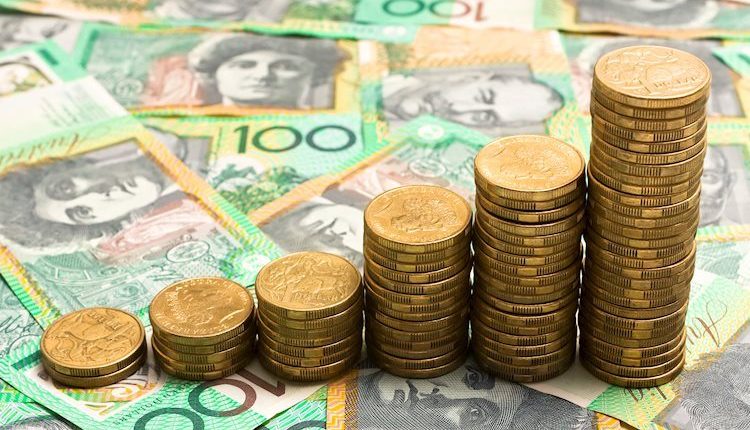- The Australian Dollar softens in Thursday’s Asian session.
- Slower-than-expected Australia’s Q3 GDP and heightened expectations of RBA’s dovish stance exert some selling pressure on the Aussie.
- The US weekly Initial Jobless Claims and Goods Trade Balance are due later on Thursday.
The Australian Dollar (AUD) remains under selling pressure on Thursday. The disappointing Australian economic data and rising expectations for an early interest rate cut by the Reserve Bank of Australia (RBA) drag the Aussie lower. Additionally, the concerns about potential tariffs on imports from President-elect Donald Trump might contribute to the AUD’s downside.
Traders will monitor the US weekly Initial Jobless Claims and Goods Trade Balance on Thursday for fresh impetus. Any signs of softer US labour market data could weaken the Greenback and help limit the pair’s losses. On Friday, all eyes will be on the US Nonfarm Payrolls (NFP) report for November.
Australian Dollar retains negative bias amid downbeat data, RBA dovish bets
- Australia’s trade surplus increased to 5,953M MoM in October from 4,532M in September, better than the 4,500M forecasts.
- Australia’s Gross Domestic Product (GDP) grew 0.3% QoQ in the third quarter (Q3), compared with the 0.2% growth in Q2. This reading was below the market consensus of 0.4%.
- The final reading of Australia’s Judo Bank Services PMI improved to 50.5 in November from 49.6 in October, beating the estimation of 49.6.
- The Fed Chair Jerome Powell said on Wednesday that the US economy is stronger now than the US central bank had expected in September when it began reducing interest rates, allowing Fed officials to potentially slow the pace of interest rate cuts ahead.
- The US ISM Services PMI fell to 52.1 in November from 56.0 in October. This reading came in weaker than the expectation of 55.5.
- The US S&P Global Composite PMI declined to 54.9 in November versus 55.3 prior. Meanwhile, the Services PMI dropped to 56.1 in November from 57.0 in the previous reading. Both figures came in weaker than the estimations.
- San Francisco Fed President Mary Daly noted on Wednesday that the US central bank does not need to be urgent on rate cuts, adding that the Fed has more work ahead to achieve 2% inflation and lasting growth.
AUD/USD’s bearish momentum on the daily chart remains intact
The Australian Dollar trades on a softer note on the day. The negative outlook of the AUD/USD pair remains in play, characterized by the price holding below the key 100-day Exponential Moving Average (EMA) on the daily timeframe. The 14-day Relative Strength Index (RSI) stands below the 50-midline near 37.70, supporting the downward movement of the pair in the near term.
Sustained bearish momentum below 0.6325 could draw in enough sellers to 0.6285, the low of October 3, 2023. Any follow-through selling could see a drop to the 0.6200 psychological mark.
On the upside, any follow-through buying above the upper boundary of the trend channel of 0.6512 could pave the way to 0.6626, the 100-day EMA. Consistent trades above the mentioned level could pave the way to 0.6687, the high of November 7.
Australian Dollar FAQs
One of the most significant factors for the Australian Dollar (AUD) is the level of interest rates set by the Reserve Bank of Australia (RBA). Because Australia is a resource-rich country another key driver is the price of its biggest export, Iron Ore. The health of the Chinese economy, its largest trading partner, is a factor, as well as inflation in Australia, its growth rate and Trade Balance. Market sentiment – whether investors are taking on more risky assets (risk-on) or seeking safe-havens (risk-off) – is also a factor, with risk-on positive for AUD.
The Reserve Bank of Australia (RBA) influences the Australian Dollar (AUD) by setting the level of interest rates that Australian banks can lend to each other. This influences the level of interest rates in the economy as a whole. The main goal of the RBA is to maintain a stable inflation rate of 2-3% by adjusting interest rates up or down. Relatively high interest rates compared to other major central banks support the AUD, and the opposite for relatively low. The RBA can also use quantitative easing and tightening to influence credit conditions, with the former AUD-negative and the latter AUD-positive.
China is Australia’s largest trading partner so the health of the Chinese economy is a major influence on the value of the Australian Dollar (AUD). When the Chinese economy is doing well it purchases more raw materials, goods and services from Australia, lifting demand for the AUD, and pushing up its value. The opposite is the case when the Chinese economy is not growing as fast as expected. Positive or negative surprises in Chinese growth data, therefore, often have a direct impact on the Australian Dollar and its pairs.
Iron Ore is Australia’s largest export, accounting for $118 billion a year according to data from 2021, with China as its primary destination. The price of Iron Ore, therefore, can be a driver of the Australian Dollar. Generally, if the price of Iron Ore rises, AUD also goes up, as aggregate demand for the currency increases. The opposite is the case if the price of Iron Ore falls. Higher Iron Ore prices also tend to result in a greater likelihood of a positive Trade Balance for Australia, which is also positive of the AUD.
The Trade Balance, which is the difference between what a country earns from its exports versus what it pays for its imports, is another factor that can influence the value of the Australian Dollar. If Australia produces highly sought after exports, then its currency will gain in value purely from the surplus demand created from foreign buyers seeking to purchase its exports versus what it spends to purchase imports. Therefore, a positive net Trade Balance strengthens the AUD, with the opposite effect if the Trade Balance is negative.
Read the full article here

